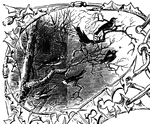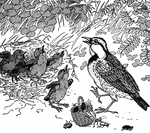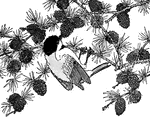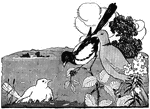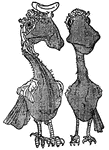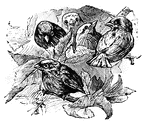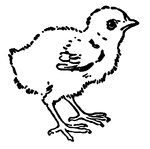
Stormy Petrel
The smallest of the web-footed birds, the stormy petrel averages only about six inches in length.

Bone of the cuttle-fish
"An internal support of a calcareous nature, and formed in laminae; this is the well-known cuttlefish…
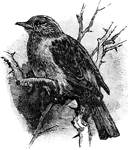
Hedge Sparrow
"Accentor- A genus of passerine birds, family Sylviidæ, subfamily Accentorinæ."-Whitney,…

Love Birds
"Agapornis- A genus of small African parrots, including the love-birds, sometimes made the type of a…

Amnion
"The innermost one of the membranes which envelop the embryo of the higher vertebrates,as mammals, birds,…
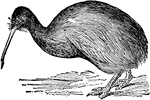
Apteryx
"Apteryx is a genus of birds, the typical one of the family apterygidæ. Two species are known-…

Mygale
"The spiders with which we in temperate climates are most acquainted are of small size, but in hot regions…
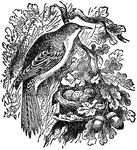
Common Creeper
"Creepers are a family of birds which strongly resemble the woodpeckers in their habit of creeping on…

Sea Eagle
"Eagle is a name given to many birds of prey in the family Falconidæ. The golden eagle, the white-headed…
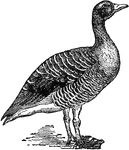
Wild Goose
"Goose is the name of a well-known family of natatorial birds. The domestic goose is believed to have…
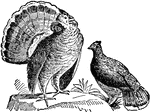
Ruffed Grouse
"Grouse, in ornithology, are various game-birds, specially the black grouse, and the red grouse. The…
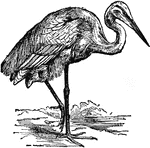
Heron
"Heron is the common name of birds of the genus Ardea. The herons are distinguished by having a long…

Song Thrush
"Thrush, in ornithology, is the name for any of the Turdidæ. They are universally distributed,…

Tinamou
"Tinamou is the name given to a genus and family of birds occurring in South America, and allied in…

Tuatera
"Tuatera is a large lizard from New Zealand; apparently carnivorous, and in captivity are fed on raw…

Turnstone
"Turnstone is a small genus of birds of the plover family, intermediate between the true plovers and…
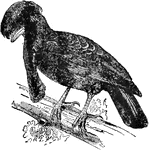
Umbrellabird
"The Umbrella Bird is a native of Peru. It is about the size of a crow, with deep black plumage; the…
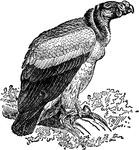
King Vulture
"A Vulture is any member of the family Vulturidæ included among the birds of prey. In all the…
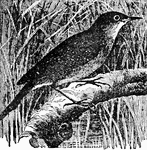
Reed Warbler
"Warbler is a popular name often applied to well-known singing birds of northern climes, whose notes…

Nest of Reed Warbler
"Warbler is a popular name often applied to well-known singing birds of northern climes, whose notes…
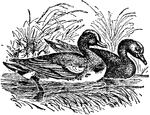
Wigeon
"Wigeon is one of the most popular birds with the American sportsman. Length about eighteen inches;…
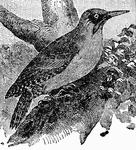
Green Woodpecker
"Woodpecker is the popular name of the old Linnæan genus Picus, now greatly divided. Woodpeckers…
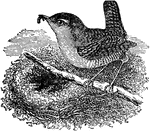
Wren
"Wren is a genus of birds, having a slender, slightly curved, and pointed bill; the wings very short…

Hornbill
"Hornbills are a remarkable group of birds confined to Southern Asia and Africa, akin to the kingfishers…

Jacana
"The Jacana is a wading bird; a genus of grallatores. They are very light birds; and the wide surface…
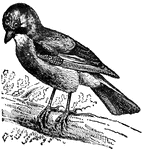
Jay
"Jay is the popular name of a species of birds belonging to the crow family, of a vinous red color;…

Kinkajou
"Kinkajou is a genus of carnivorous mammals. They have prehensile tails, with which they hang on to…

Lizard
"Lizard is the popular name of numerous reptiles having usually two pairs of limbs and an elongated…

Osprey
"The Osprey, the fish hawk, bald buzzard, or fishing eagle. A bird of prey, of almost world wide distribution…
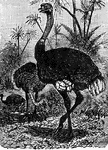
Ostrich
"The Ostrich is the largest of all living birds, standing from six to eight feet in height, and has…
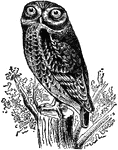
Rock Owl
"The owl is a popular name for any nocturnal, raptorial bird, of which about 200 species are known.…
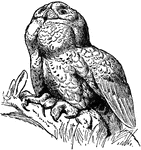
Great Snow Owl
"The owl is a popular name for any nocturnal, raptorial bird, of which about 200 species are known.…

Oystercatcher
"Oyster catcher is a name applied to several American species of wading birds, also a handsome European…
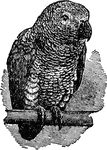
Gray Parrot
"Parrot is the popular name for any individual of a well-known group of birds from the warmer regions…

Penguin
"The Penguins are aquatic birds confined to the high S. latitudes or both hemispheres, where they congregate…
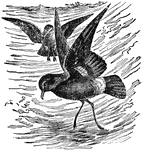
Stormy Petrel
"Petrel is a popular name for certain small oceanic birds of dusky plumage, nocturnal in habit, widely…

Phalanger
"The Phalanger is a small woolly-coated marsupial, with opposable great toes, which are destitute of…
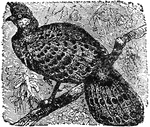
Pheasant
"The Pheasant is one of the most highly prized game birds. The adult male pheasant is a beautiful bird,…
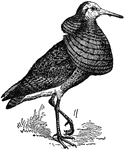
Fighting Sandpiper
"Sandpiper is a popular name for several wading birds."—(Charles Leonard-Stuart, 1911)
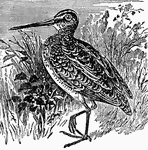
Snipe
"Snipe is the name of a common family of birds. The common American snipe is about equal in size to…

Spider Fly
"Spider Fly is a genus of dipterous insects, chiefly allied to the forest fly. The insects are parasitical…
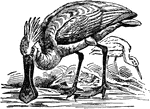
Spoonbill
"Spoonbill is the popular name of the birds of the genus Platalea, belonging to the heron family (Ardeidæ),…

